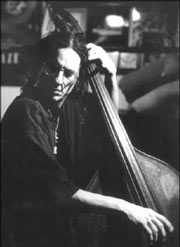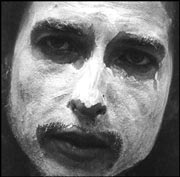THE MUSIC OF ERIC VON ESSEN
VOLUMES 1-3
various artists
(Cryptogramophone Records, $37.50)
IN 1997, JAZZ PIANIST Tom Garvin accepted a teaching post at the Sverigefinska Folkh�olan, in Haparanda, Sweden. The offer had come under unhappy circumstances: Garvin’s friend Eric von Essen, who’d taught in the jazz studies program at the university for nearly four years, had passed away in his sleep the previous August; he was 43. Garvin was traveling to Sweden to assume von Essen’s teaching duties.
Among von Essen’s belongings at his Haparanda home, Garvin found a loose-leaf folder, tucked without ceremony into a nondescript box. Inside that folder were over 100 compositions written by von Essen, arranged alphabetically by title, slipped into plastic sleeves, and cross-indexed.
When Garvin called Los Angeles to tell violinist and mutual friend Jeff Gauthier what he’d found, Gauthier was floored.
“In almost 20 years of knowing Eric,” says Gauthier, “I’d never known him to be that organized. There was music on the floor, on the piano . . . never arranged carefully. You could speculate that maybe he was feeling his mortality; I think there was just a part of him that had begun to realize other people might want access to this music at a later time.”
In a sense, says Gauthier, collecting his music was indicative of the larger ways in which Eric von Essen had recently begun to care for himself.
“Eric left California for Sweden partly because he’d wanted to reorganize his own life. The freelance lifestyle wasn’t conducive to his health anymore. So he began to teach. And he was fantastic. Eric used to joke that going to U.C.L.A. had ruined music for him, that he’d had to unlearn everything he’d ever been taught to get that love for music back. But I think he discovered, towards the end of his life, that he really was a teacher. He loved sharing what he knew with his students.
“When he died,” Gauthier says quietly, “it was inconceivable to me that this stream could just dry up. I couldn’t imagine a universe without Eric’s music.”
THE MUSIC OF ERIC VON ESSEN—comprising three volumes on Gauthier’s Cryptogramophone label—is, to cop a Roland Kirk title, one of contemporary music’s bright moments. Its various ensembles constitute a shortlist of von Essen’s many admirers and former collaborators; its compositional styles run the gamut from blues to avant-garde and back. Taken whole, it’s one of the most significant recovery projects of jazz’s past decade. And, simply put, it’s a representative introduction to some of the most extraordinary performers currently based in Los Angeles.
With the assistance of nearly two dozen players from L.A. and environs, Gauthier selected and organized the recording of 30 von Essen pieces. Representing two decades of writing, the performances themselves—recorded over just a six-month span—manage to sound at once freshly minted and familiar, an effect that likely stems from the performers’ close relationship to the man and the music.
In his lifetime, Eric von Essen was known primarily as a blazingly talented bass player. As a member of the visionary L.A. jazz ensemble Quartet Music, and as a much-sought-after session player, von Essen moved in rarified circles, recording and performing with Mose Allison, Jimmy Rowles, Bob Brookmeyer, Lou Levy, Art Farmer, and other luminaries. But his own unique impact was felt most immediately in Los Angeles, where he moved at the center of a thriving avant-jazz scene.
“When these combos came in to record,” says Gauthier, “they were on fire. There was very little rehearsing done. But these were all people who knew Eric, and many of them had played with him regularly. So they knew, sort of instinctively, the direction they wanted to go in.”
Hearing the music come together, Gauthier reports that he could detect his friend’s spirit within the pieces, some of which were separated chronologically by as much as 20 years.
“There’s an essential Eric-ness to all the music that’s immediately apparent to me and impossible for me to put into words,” says Gauthier. “Eric’s facility with harmony was one of the best I’ve ever heard. It was subtle and clever, and there was always a thread of humor in the background, even in the most romantic pieces.”
As The Music of Eric von Essen documents, by the time of his death, von Essen had moved away from the experimentation of Quartet Music, toward a more traditionalist statement-and-variation composition style. These moments—like “Blues for Me” and the exquisite “Flicker and Burn,” from Volume III—showcase perhaps the most ethereal qualities of von Essen’s music, a Mingus-esque melodicism shot through with tension-filled changes.
Since the first installment of the von Essen series, Cryptogramophone has released recordings by some of the most esoteric and innovative musicians in contemporary jazz—a state of affairs which, one thinks, von Essen would find eminently gratifying.
“It was very selfish in a way, this project,” says Gauthier. “I started organizing the label and making the initial phone calls because I didn’t want to be without Eric’s music. And the music’s all that’s left. But it’s amazing how much of him is still around because of it.”









